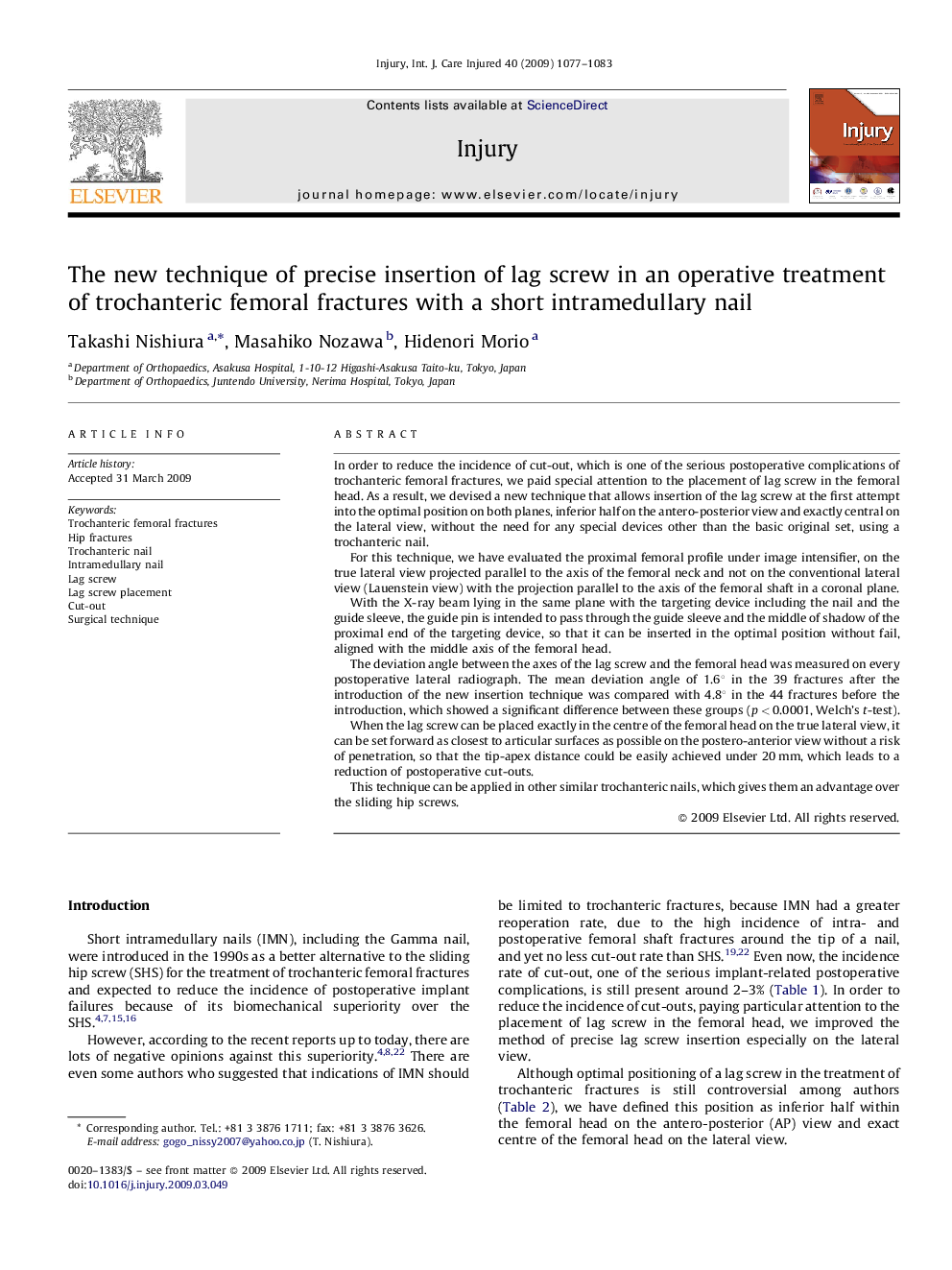| Article ID | Journal | Published Year | Pages | File Type |
|---|---|---|---|---|
| 3240956 | Injury | 2009 | 7 Pages |
In order to reduce the incidence of cut-out, which is one of the serious postoperative complications of trochanteric femoral fractures, we paid special attention to the placement of lag screw in the femoral head. As a result, we devised a new technique that allows insertion of the lag screw at the first attempt into the optimal position on both planes, inferior half on the antero-posterior view and exactly central on the lateral view, without the need for any special devices other than the basic original set, using a trochanteric nail.For this technique, we have evaluated the proximal femoral profile under image intensifier, on the true lateral view projected parallel to the axis of the femoral neck and not on the conventional lateral view (Lauenstein view) with the projection parallel to the axis of the femoral shaft in a coronal plane.With the X-ray beam lying in the same plane with the targeting device including the nail and the guide sleeve, the guide pin is intended to pass through the guide sleeve and the middle of shadow of the proximal end of the targeting device, so that it can be inserted in the optimal position without fail, aligned with the middle axis of the femoral head.The deviation angle between the axes of the lag screw and the femoral head was measured on every postoperative lateral radiograph. The mean deviation angle of 1.6° in the 39 fractures after the introduction of the new insertion technique was compared with 4.8° in the 44 fractures before the introduction, which showed a significant difference between these groups (p < 0.0001, Welch's t-test).When the lag screw can be placed exactly in the centre of the femoral head on the true lateral view, it can be set forward as closest to articular surfaces as possible on the postero-anterior view without a risk of penetration, so that the tip-apex distance could be easily achieved under 20 mm, which leads to a reduction of postoperative cut-outs.This technique can be applied in other similar trochanteric nails, which gives them an advantage over the sliding hip screws.
